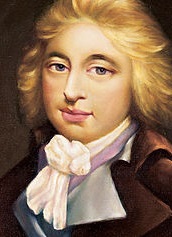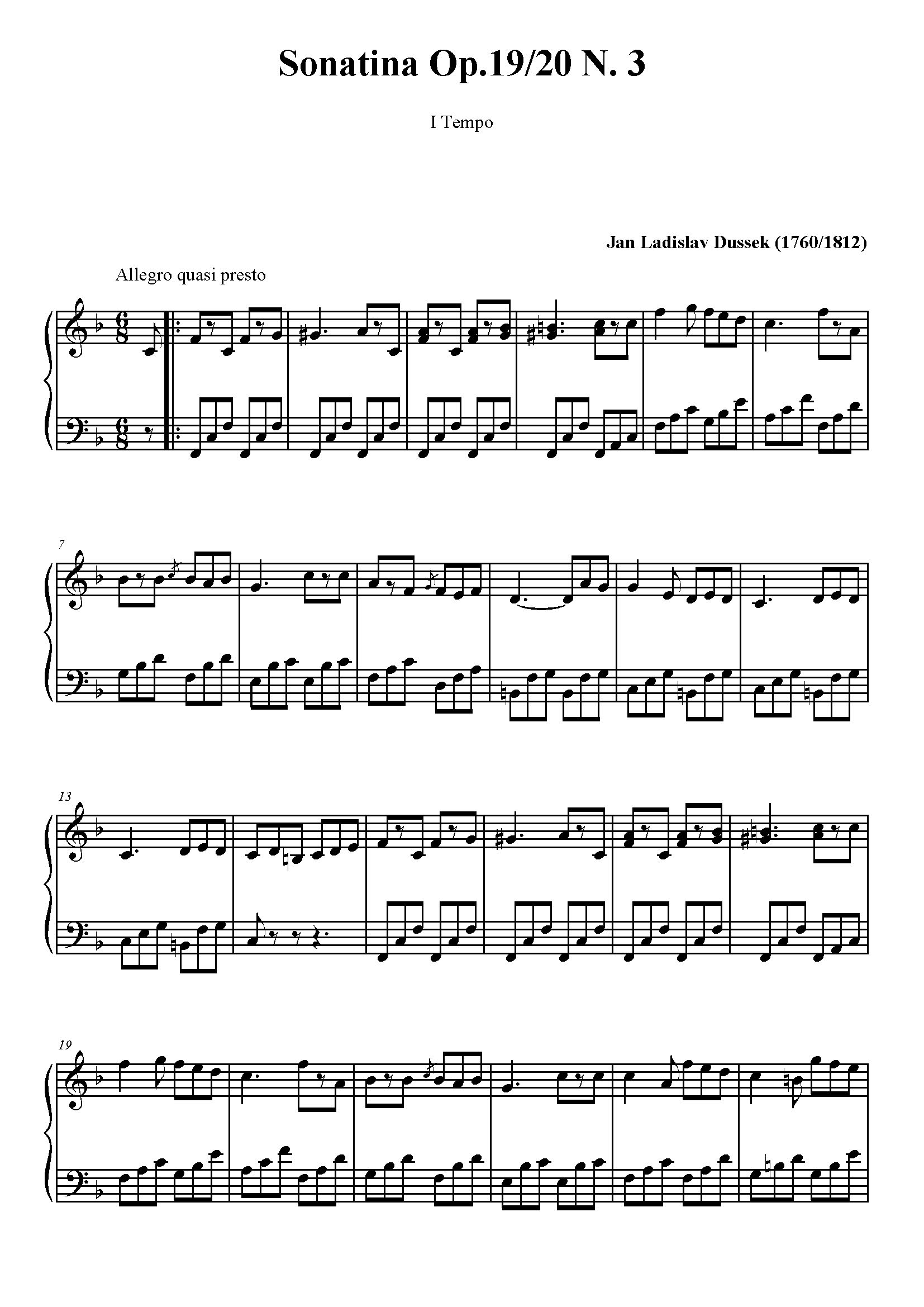Sonatina Op. 19/20 n. 3

Dussek, Jan Ladislav (1760 - 1812)
Sonatina in F Maj. Op. 19 / 20 n. 3
| Sonatina in F Maj. Op. 19 / 20 n. 3 | |||||
| Piano: Tullio Forlenza |
|||||
|
You can purchase these recordings in HD quality (192.000 Hz 24 bit) |
|||||
 |
|||||
To consult different editions of this work go to:
JAN LADISLAV DUSSEK - 6 Sonatinas for Piano, Op. 19 / 20 - IMSLP
CENNI STORICI
This Sonatina in F Maj. Op. 19 / 20 is the third of a group of six sonatinas, originally written for piano with flute accompaniment, published in 1793 in London by Longman & Broderip.
CHARACTERISTICS OF THE PIECE
The Sonatina in F Maj. Op. 19 / 20 n. 3 consists of two Movements:
1st Mov.: Allegro quasi presto
2nd Mov.: Rondó. Andantino
The first movement is a Tarantella, characterized by frequent brief pauses which give it a constant slightly hopping-like rhythm. The themes, however, are not devoid of melodic character which is accentuated in the short central development.
From a formal point of view, the schema is very simple. The first thematic section is in F Maj, within which the initial element is repeated twice before a modulating transition leads us to the elements of the second thematic section that revolves around the dominant C, presented first in a minor and then a major mode.
The entire exposition is repeated before connecting to the central part, where the different modulations follow on from each other. The initial theme appears once more in the recapitulation section in the initial key of F Maj, without any repetition, and the second thematic section alternates with the repetition of minor/major modes as occurred in the exposition, but gravitating, logically, towards the key of the tonic F.
AI B1I AII B1II C AIIIacc.B2
The second movement is a Rondo to be played at a moderate speed. The main episode is cantabile and “arioso”, and contains the typical elements found in chamber music, alternating short polyphonies and stratified voices. The first alternative episode is a curious homorhythmic element in which the melody is concealed in the design of the quatrains of semiquavers.
After this very short episode, the main theme returns in a shortened form and immediately after, we have the larger episode of the Rondò, an extended melodic and expressive part in F min. Then, with a short cadence, we return to a full reprise of the first episode.
AI B AIIacc. C AIII
PERFORMANCE NOTE
This Sonatina in F. Maj. Op 19 / 20 n. 3 was a very pleasant piece to perform. From an expressive point of view I tried to emphasize the rhythm of tarantella in the first movement, with its characteristic vivacity and brightness. However I took care not to play it at a speed incompatible with the level in which the piece was inserted, since playing too fast is a very common risk in this type of music.
In the second movement the main idea was to treat the writing of the principal part as if it were a piece of chamber music, highlighting the different overlapping voices and the short polyphonies. In order to give a different character to the episodes which followed, I felt it was important to play the first alternative episode, the homorhythmic one, in a more homogeneous fashion, and to represent the central one as a song with accompaniment, with freer and more expressive phrasing.
Tullio Forlenza
(Trad.: Sara Rosenman)
